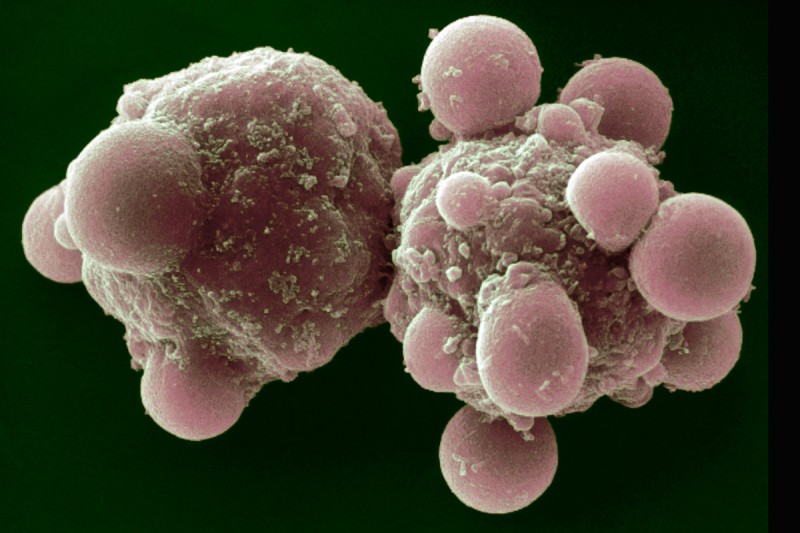Many people think of death as a dreaded enemy; they tend to define death as the end of life, and indeed, for every individual, it is. However, there is not just one type of death; it has different forms. Besides the death of our bodies as large multicellular organisms, there are also a lot of death forms inside our bodies as we live. This death, on the cellular level, is essential for life!
There are two ways in which the cells die: necrosis and apoptosis. Necrosis means the death of a certain area of plant or animal tissue as a result of an external force, such as injuries, both physical: cuts, burns, and bruises; and biological: effects of disease-causing agents. The sign of necrosis is called a lesion; it is often of diagnostic value. Necrosis is brought about by intracellular enzymes that are activated upon injury and proceed to destroy damaged cells.
Apoptosis, on the other hand, is a process in which cells commit suicide, if they are no longer needed, through a programmed process of cellular self-destruction. As you read this, millions of your cells are dying; do not panic, you will not lose them. Most of these dying cells are either unneeded or potentially harmful, so you are better off without them.

Liver cells blebbing and undergoing apoptosis - Image: © 2021 Memorial Sloan Kettering Cancer Center
The word apoptosis is a Greek word used to describe the act of dropping off or falling off of petals from flowers, or leaves from trees. Even though apoptosis involves cell death, it serves a healthy and protective role in our bodies. Apoptosis helps in shaping our physical features and organs before birth and rids our bodies of unneeded or potentially harmful cells. Without apoptosis, you would not have your fingers and toes or the proper brain cell connections to be able to read or understand the words in this article.
Apoptosis differs from necrosis in that it is essential to human development. For example, in the womb, our fingers and toes are connected to one another by a sort of webbing, which apoptosis causes to disappear, leaving us with ten separate digits. As our brains develop, the body creates millions more cells than it needs; the ones that do not form synaptic connections undergo apoptosis so that the remaining cells function well.
During apoptosis, the cell shrinks and pulls away from its neighbors. Then the surface of the cell appears to boil, with fragments breaking away and escaping like bubbles from a pot of hot water. The DNA in the cell’s nucleus condenses and breaks into evenly sized fragments. The cell shrinks and sends out distress signals, which are answered by vacuum cleaners arrives on the scene to mop up the remains, so these cells have no chance to cause damage.
In opposition to necrosis, cells that go through apoptosis die in response to signals within the body not due to outer agents. When cells recognize viruses and gene transformations, they may induce death to prevent the damage from spreading. Apoptosis can occur also when cells are under stress, as may happen when a person undergoes radiation.
This does not mean that apoptosis is a perfect process. There are also signals within the body that convey a message that a cell should continue living. All cells have varying level of sensitivity to the positive and negative triggers, so sometimes the wrong cells live and die.
Many diseases and disorders are linked with the life and death of cells. Increased apoptosis is a characteristic of AIDS, Alzheimer’s and Parkinson’s diseases, while decreased apoptosis can signal lupus or cancer. That is why scientists are trying to learn how they can control which cells live and which undergo Programmed Cell Death (PCD). Anti-cancer drugs and radiation, for example, work by triggering apoptosis in diseased cells.
Cell death is an area in which scientists have made great leaps in understanding in recent years. Thus, understanding how to regulate apoptosis could be the first step to treating these conditions.
The role of death in nature and in our bodies is indispensable. Hence, the next time when you hear the word death, give it a second thought. Even though at first this word may sound dreadful, remember that death is essential to life.
References
livescience.com
publications.nigms.nih.gov
ncbi.nlm.nih.gov
science.howstuffworks.com
bigthink.com
britannica.com
*Banner image source: biocompare.com
**This article was published in the SCIplanet, Winter 2015 issue.